It’s hard to fit everything into a guided reading lesson. You might want to have students reread familiar texts, do a little word study, introduce a new book, have students write a sentence or two…the list goes on.
But you and I both know that we are all pressed for time! So what activity should we prioritize when it comes to guided reading?
The answer is pretty simple – it’s READING!
You can certainly pull small groups and teach other literacy skills (like phonics or writing) at other times of the day. But during guided reading, the most important thing for students to be doing is reading a text at their instructional level (with your support).
In today’s post, we’ll discuss what the teacher and students are doing during the whisper or silent reading portion of a guided reading lesson (this post is geared toward K-2 teachers).
I’ll share what I’ve learned about how we can effectively coach readers as they problem-solve a text. I’ll also provide some suggestions for supporting students who are pre-readers and cannot yet read a level A text.
This post is the third in my month-long series on guided reading. If you haven’t already, you may want to go back and read the first post (about the components of a guided reading lesson in a K-2 classroom) by clicking HERE. To read the second post (about crafting a strong book introduction), click HERE.
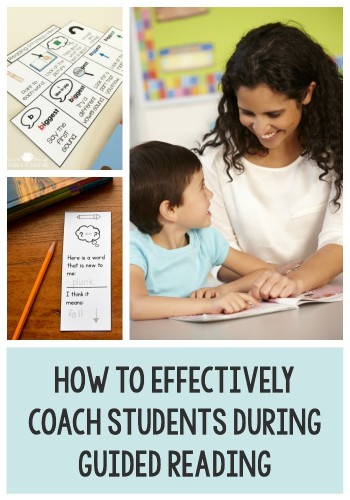
Choosing Books for Guided Reading
Before we begin thinking about how to coach students as they read the text, we have to make sure we’re selecting appropriate books for our kids to read.
I take a couple different things into consideration when selecting books for guided reading:
- The level of a text
- The length of a text
- How a text will (or will not) contribute to my teaching goals for the group of students who will be reading it
The text level is important because we want it to be just a little bit harder than what students can read independently. We want to give them some challenges to help move them forward – but we don’t want them to struggle through the book.
I’ve found that consistently taking running records is a great way to make sure that the texts I’m selecting are appropriate for the group of students. You can read more about taking running records by clicking HERE.
Using a running record to calculate a child’s reading accuracy gives us some information about the level of text that the student should be reading during guided reading.
Generally, when a beginning reader can read a text with 95% accuracy or better, that book is at the child’s independent level. We want to target the instructional level, however – the level of book that a child can read with 90-94% accuracy. A lower reading accuracy would indicate that the text is too hard for the student, even given the supportive instruction of a teacher.
According to Fountas and Pinnell, when a student is reading at Level L or higher, we want to give them texts (during guided reading) that they can read with 95-97% comprehension or higher, with good comprehension.
I don’t force my students to read at their levels during any other time of the day – but I do try pretty hard to effectively match books to readers for guided reading.
In addition to considering the text level, we also want to think about the text length. This is not usually an issue when we’re working with readers below level J or K. But as books get more challenging, they also get longer.
As I mentioned in the first post in this series, I try to make sure that a primary guided reading group can get through a text in two lessons. Otherwise, students tend to lose track of what the text was about. If there’s a longer text that I really want students to experience, I might choose a great chapter or two from it and share it with them during guided reading (and they can finish the book independently, if they like).
Last, I try to find texts that match my goals for the group of students. If the group really needs to work on a particular phonics pattern or comprehension skill, I look for a book that lends itself to that goal. If I need to reinforce a comprehension strategy I’m teaching during whole group lessons, I find a text that I can use to teach that strategy.
One last note about choosing texts: I try to expose students to as many different texts as possible during guided reading (throughout the year). Although I have students reread texts for fluency practice at the beginning of my lessons, I do try to introduce new texts as often as possible (every 1-2 lessons).
To see different ways for structuring your guided reading lesson plans, please click on the image below and you can sign up to receive free lesson planning templates! 🙂
The Students’ Role
During guided reading, after I introduce a new text, students either whisper or silently read the text at their own pace. I typically have student start silent reading if they are reading texts at a level K or above.
We don’t do round robin reading, popcorn reading, or choral reading because it doesn’t ensure that each individual child gets enough reading practice (and that’s what guided reading is all about!).
If I notice that one student is just echoing the reader next to him and not really reading the text, I’ll just casually ask the child to reread a sentence for me. This puts a stop to the “fake reading” without embarrassing the child or drawing attention to it.
Sometimes I ask older students (2nd grade and up) to do a little writing as they go through the text. They might write down a new vocabulary word, fact that surprised them, or an important character trait. If I’m having them look for a particular idea or pay attention to where they used a certain strategy, they can place a sticky note in that part of the text.
In general, however, the students’ job during the reading portion is just to read – I don’t have them spend much time at all on writing.
If students finish the text early, they can reread or practice a favorite part of the text. It’s also fun to keep these “write-on” bookmarks on hand for early finishers:
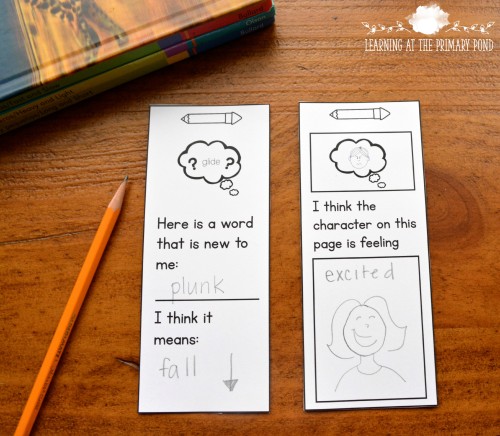
You can find these bookmarks in either of these toolkits:
The Teacher’s Role
While students read, the teacher does some quick conferring with as many of the students in the group as possible. This is a great opportunity to coach your readers!
I like to teach students that when I quietly tap the table in front of them, they should begin reading loudly enough for me to listen in. As I listen in, I can support students with their decoding, fluency, and comprehension.
Sometimes the “easiest” conferences happen when a child gets to a tricky word. You can prompt the student to…
- Look at the picture and think about what would make sense
- Back up and reread
- Look for a part of the word that they know
- Use the first and/or last letter
- Think about what would sound right in the sentence
- Break the word up into chunks
- Etc.
You might want to use a strategy menu as a visual reference during your coaching.
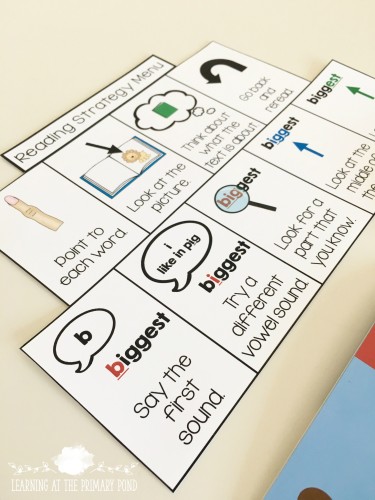
Two different strategy menus are included in your free guided reading toolkit download. (If you haven’t already signed up, click on the image below to sign up.)
You can use similar prompts when a child makes a reading error. However, I always try to let the child finish the sentence or page before I interrupt. I want to wait and see if the child self-corrects, or at least notices that he/she made a mistake. Teaching children to fix up their own errors is important, and we aren’t teaching them to do this if we immediately interrupt after a mistake.
Sometimes, a child will make several errors as we listen to them read. In these cases, it’s tricky to know exactly what we should teach. Should we make the child fix every single error?
So as not to spend the entire reading time with just one child, I pick one thing that the student needs to learn. If there’s a strategy that a child is “almost” using, or using inconsistently, then I try to teach that strategy because it’s within reach for the child.
For example, if a child pays attention to a word ending only once, I’ll praise her for it. Then, I’ll ask her to apply that same strategy when reading all words.
Another thing to consider: if a child is making many different mistakes during guided reading, the book is too hard for him. We’ll probably need to rethink our grouping so that the child can read more accessible texts during guided reading time.
On the other hand, sometimes we listen to a student read and find that they’re not making ANY decoding mistakes at all! In this case, I ask myself:
- Is the child attending to punctuation and pausing appropriately?
- Is the child reading with expression?
- Is the child “scooping up” words and reading in smooth phrases?
- Can the child talk about his thinking as he reads this part of the text?
- Can the child identify important story elements?
- Can the child summarize what he’s read so far?
- Can the child discuss the main idea?
- Is the child using text features to understand the information?
- Are there any new vocabulary words the child may have encountered on the page? What does he think that the words mean?
When a child isn’t making any mistakes and her fluency is good, I start up a quick conversation to find out what the child is thinking about as she reads. For a list of the questions I use to get these conversations started, make sure you’ve signed up to receive my free guided reading toolkit!
One other thing I want to mention is that I always try to give each reader a compliment as I coach them during guided reading. I try to find one strategy that the reader is using effectively, and I clearly state what she is doing.
For example, if a student is doing a great job with self-correcting using meaning, I might say, “Brian, I noticed that every time you made a mistake, you went back and fixed it! You thought about what made sense and made your reading match what was happening in the story. Keep it up!”
Not only does this make the child feel good, but it also serves to reinforce the child’s use of that strategy and encourage him to continue using it in the future.
You might have noticed that I didn’t mention taking any running records during this portion of guided reading. That’s because I don’t. When children are working in new texts, I want to be available to check in with each of them. I take my running records during the “familiar reads” portion of my lesson, which you can read about in the first post in this series.
Providing Additional Support for Emergent Readers
If you teach students who cannot yet read a level A text, the scenario I’ve described above probably sounds unrealistic to you.
You can’t just introduce a text, have students whisper read it, and then spend a little time coaching each student. Your kids just aren’t there yet.
And that’s okay! Nevertheless…
“If children do not know letters, there is no need to delay their reading of text. They can continue to learn more about letters and words as they encounter them in texts” (Fountas & Pinnell, 1996, p. 4).
I don’t believe in waiting until some magical moment when a child is suddenly ready for guided reading. Although it’s important to devote time to teaching letter sounds and phonological awareness, we can still get our pre-emergent readers working with books during guided reading.
When I work with pre-emergent readers, I can provide support to them by using one of the following strategies:
- Echo read (you read each page and then the students read it chorally)
- Choral read (I read the book aloud to students and then we read it again together)
- Teacher pre-read (I read the book aloud to students and then they read it independently)
When I use one of these strategies, I have students go back and do a second or third read on their own, without my support. You can read more about using these supports in this post.
Conclusions
Without a doubt, the most important component of a guided reading lesson is the time that students spend actually reading! It’s a valuable opportunity to get students reading new texts at their instructional level, as well as provide individualized coaching that moves students forward.
For me, one of the most challenging parts of coaching students has been the timing. I find it difficult to keep conversations short (but still valuable) and get to multiple students during each lesson. I’ve been using a timer to help keep myself on track, and that has been helpful. If you have any tips to share in this area, I’d love to hear them!
In the next post, I’ll be putting up two more posts in this series – what to discuss after students finish a book during guided reading, and post-reading activities. I’ll see you then!
Update – the guided reading series is now complete! Check out the posts here:
How to Craft Strong Book Introductions for Guided Reading
What To Discuss After Students Finish A Book During Guided Reading
10 Post-Reading Activities for K-2 Guided Reading Lessons
Overcoming The Guided Reading Time Crunch
Resources
Fountas, I. C., & Pinnell, G. S. (1996). Guided reading: Good first teaching for all children. Heinemann, 361 Hanover Street, Portsmouth, NH.
Richardson, J. (2009). The next step in guided reading: Focused assessments and targeted lessons for helping every student become a better reader. Scholastic Incorporated.
*The authors of this text are in no way affiliated with this blog – I am referencing their work as a means of explaining and supporting the ideas I set forth in this post.*


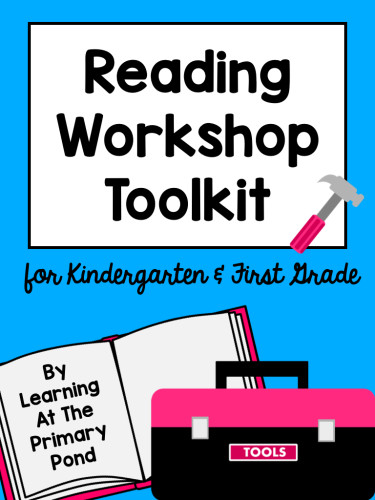
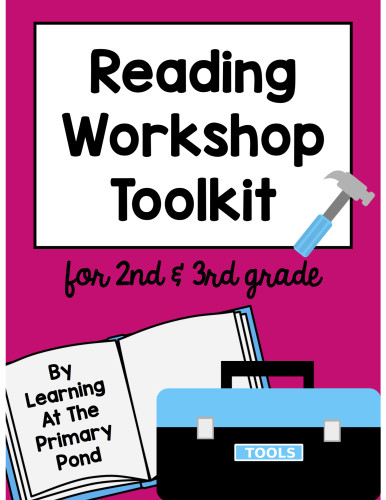
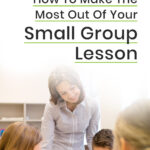
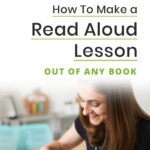
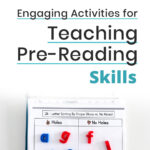
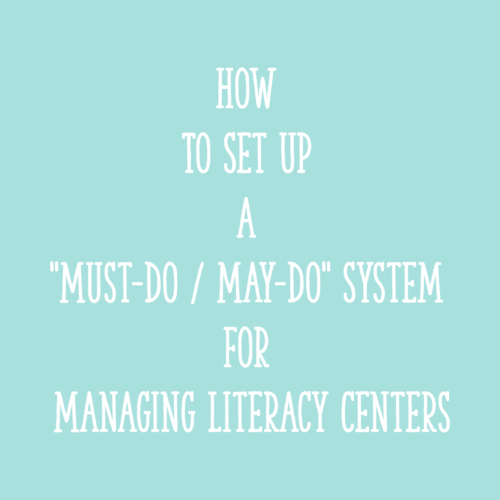
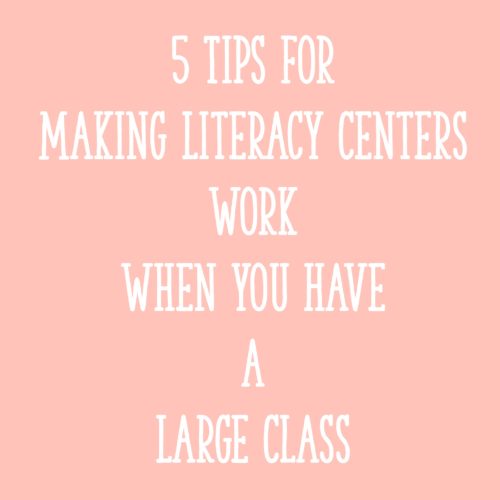







Interesting codes to help children read. Keep it up.
Thanks.
Thank you! I hope you found the information useful!! 🙂